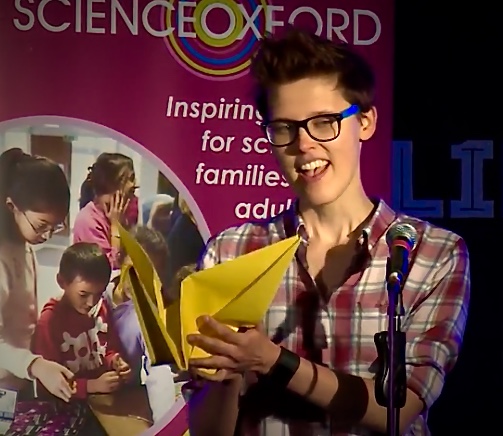The folding of Paper Cranes: DNA Origami Technology Explained by Dunn School Student in Science Communication Competition Regional Final
Using a paper crane as a prop Fodor lab DPhil student Bernadeta Dadonaite explained the potential of DNA origami technology to a capacity audience at the FameLab 2017 regional final at the Bullingdon bar and club in Oxford on 8 March.
FameLab helps communicate science to the general public in digestible three-minute competitive performances by students and researchers across the fields of science and engineering. Running in over 25 countries worldwide the competition started at Cheltenham Science Festival in 20015. Science Oxford runs the Oxford heats.
Bernadeta said: “I liked the challenge of explaining a complicated science topic to the general public and using visual props really helped with this. Public speaking can be intimidating and at times nerves got the better of me but I felt I successfully conveyed the potential of DNA origami technology – not only in terms of medical applications such as targeted drug delivery – but in other technologies. As an example I used a mobile phone to demonstrate the use of DNA nanoparticles in microchips.”
Bernadeta was one of eight regional finalists grilled by a judging panel of experts from across Oxford: John Runions, Reader in Cell and Molecular Biology at Oxford Brookes University; Jennifer Rogers, Vice President for External Affairs at the Royal Statistical Society and Director of Statistical Consultancy Services at Oxford University; and Alison Woollard, Oxford University Academic Champion for Public Engagement with Research. YouTube science vlogger Sally le Page hosted the event.
UCL PhD student Anna Ploszajski won the regional final with her three minutes used to explain the history and science of rubber with the help of a rubber duck.
The FameLab UK final will be held in London prior to the international final at Cheltenham Science Festival in June.
Further information:
